Soybeans are one of the world’s most important pulses crops and supply most of the protein and oil needs. Efficient Soybean crop production is a constraint, with many biological factors, abiotic factors, and crop management practices. Nutrient management is an important factor in maximizing crop yields. Effective nutrient management helps ensure the essential nutrients needed by plants without causing significant reductions in crop yields. Let’s check out the best fertilizer for Soybean crop.
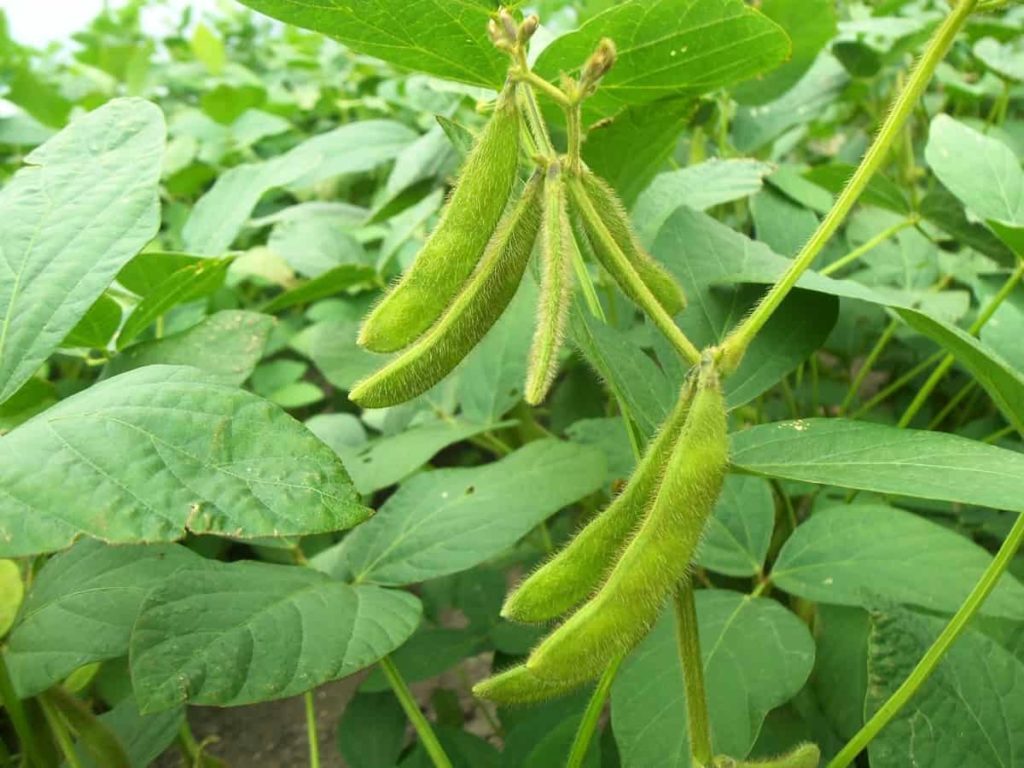
Fertilizer requirements
Compared to Corn, Wheat, and Sorghum, Soybeans eliminate a lot of nutrients per bushel of harvested grain. Soybeans are relatively low in nutrients in the early season. However, as they grow and develop, the amount of nutrients increases. Soybeans need adequate nutrients at every stage of development for maximum growth. High-yielding Soybeans extract a lot of nutrients from the soil. This should be considered in the overall nutrient management plan.
Proper nutrition is key to maximizing Soybean production. Soybeans can use environmental nitrogen, but not enough. Therefore, the crop is provided 10-15% of the total nitrogen requirement. 25 kg nitrogen per acre and 60 kg phosphorus per acre is sufficient. And potash is needed only when there is a shortage. Nutritional requirements for Soybean crops vary in concentration, and deviations can lead to nutrient deficiencies or toxicity in Soybean crops.
The availability of nutrients for Soybean crops depends on the nutrients available in the soil solution, the form of soil nutrients available, the method of nutrient excretion, its interaction with other soil nutrients, soil chemistry, and the method of application of fertilizers. Soybeans need 14 mineral nutrients for growth: Nitrogen (N), Phosphorus (P), Potassium (K), Sulfur (S), Calcium (Ca), Magnesium (Mg), Copper (Cu), Iron (Fe), Manganese (Mn), Zinc (Zn), Boron (B), Molybdenum (Mo) Chloride (Cl), and Nickel (Ni) to grow crop successfully.
In case you miss this: Organic Soybean Farming, Production Process
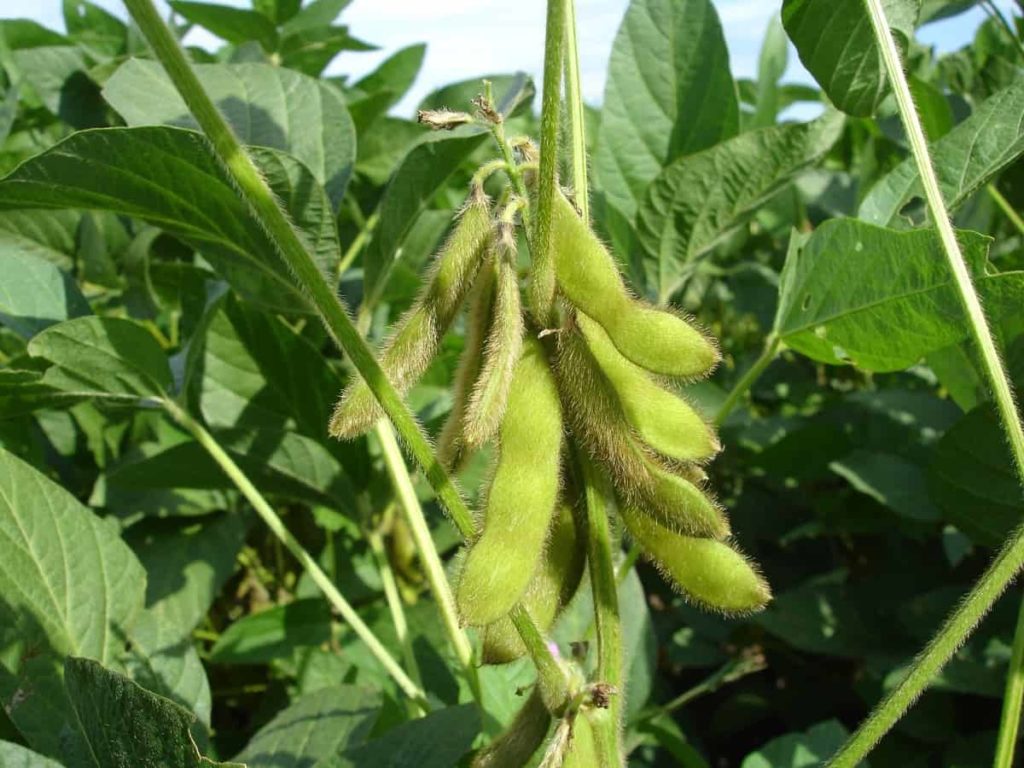
Most soils can provide adequate amounts of basic nutrients, but growers need to pay close attention to plant needs in terms of N, P, K, S, and Fe. Soybean crop yields will decrease when it is deficient in essential nutrients. Therefore, it is important to develop a profitable fertilizer program to maximize crop yields.
The best management of cropland fertility always begins with regular soil testing. Most nutrients are available in the best pH range for Soybeans. In highly acidic soils, N, P, K, S, Ca and Mg may be limited, even if soil tests report the presence of adequate levels. Alternatively, Fe, Mn, B, Cu, Zn, and Mo may be confined to alkaline soils with pH above 7.5.
Fertilizer application
- Apply 25 kg N and 60 kg P2O5 and 40 kg K2O and 30 kg S as gypsum (220 kg/ha) / ha as basal dressing.
- In the case of irrigation use 25 kg ZnSO4 / ha of soil application.
- At the pre-flowering stage, foliar spray of NAA 40 mg/l and Salicylic acid 100 mg/l once and another at 15 days thereafter.
- At flowering, foliar spray of DAP 20 g/l or urea 20 g/l once and another at 15 days thereafter
NPK ratio
In the northern plains for better production, use 25: 60: 40: 30 kg/ha of N: P: K: S as recommended dose and 5 kg Zn / ha through zinc sulfate.
In case you miss this: Soybean Seed Germination, Time, Temperature, Process
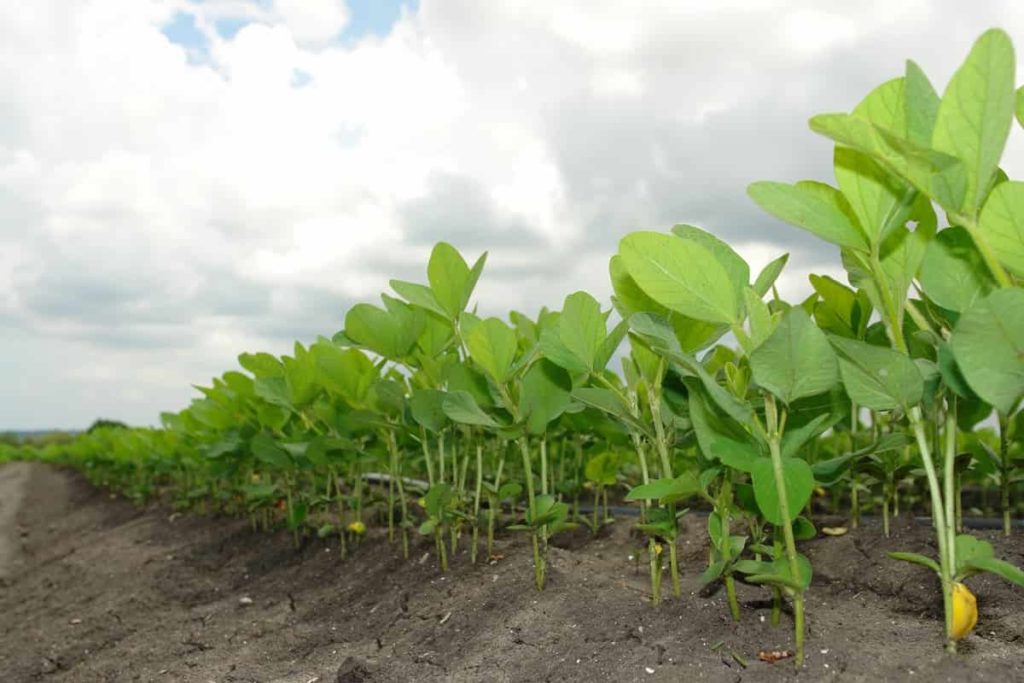
Best fertilizer for Soybean crop to get a higher yield
The best way to get a healthy and high yield of Soybean is to provide potassium nitrate through plant fertilizer leaves, which in turn increases yield. Soybeans are one of the most important sources of food and animal feed. The high-profit Soybean crop attracts a growing number of farmers and today is one of the most important parts of the plant crop trade in the world and the growing area is increasing every year.
Plant nutrition is the process of applying a fertilizer solution to plant leaves. Plant nutrition is an effective way to control the special needs of plants because plant fertilizers are absorbed where they are used. This does not mean that the use of plant manure replaces the manure applied to the soil. It does mean that plants grow in severe conditions such as diseases or soil-specific conditions (floods, droughts, etc.) or specific physical stages and enhance performance.
When plants are well-nourished, they are more resistant to pathogens and the plant can produce almost normal yields despite damage to the root system caused by nutrients or diseases. As beans begin to sprout in Soybeans, the plant needs large amounts of potassium.
Some of the potassium required can be provided with the foliar application, and it can prevent the loss of potassium from the leaves, which will affect photosynthesis and the root system. Some scientific studies have shown that well-grown Soybean plants increase productivity and reduce the incidence and severity of diseases. As a result, the use of potassium nitrate became more and more common among Soybean growers.
In case you miss this: Soybean Cultivation Income, Project Report
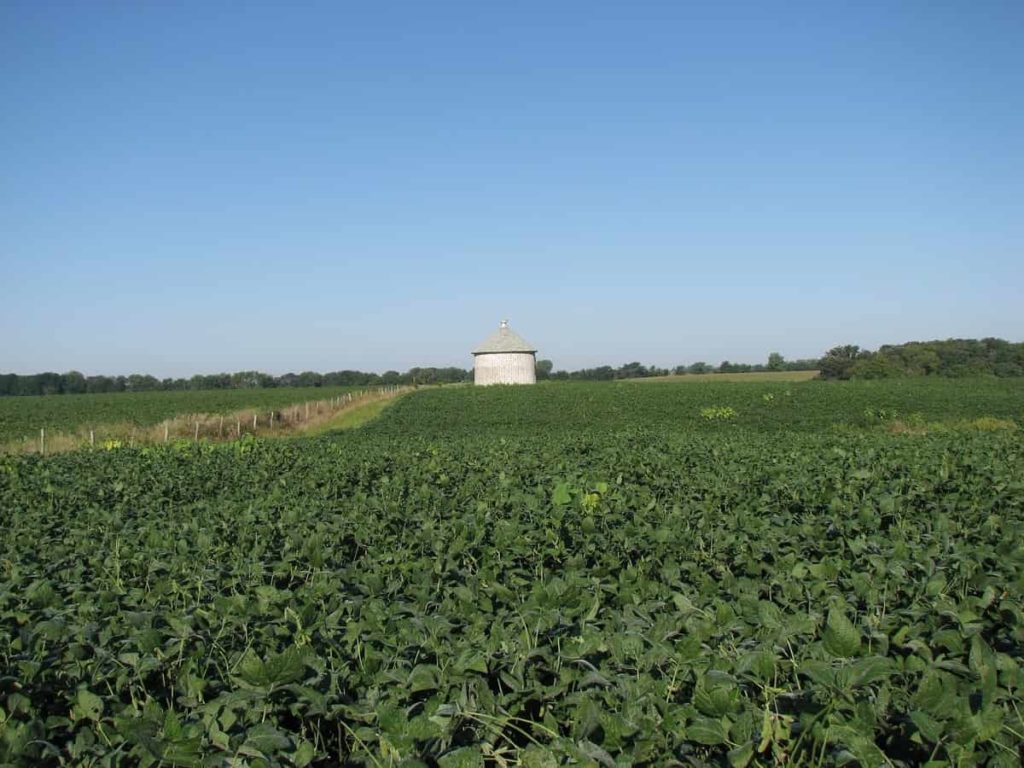
Compost manure fertilizer
In general, manure is an excellent source of phosphorus (P), potassium (K), all secondary nutrients, and micronutrients. However, producers are concerned about the effect of N in manure on nodule growth. The Soybean crop yielded more nitrogen compared to corn, leading to the conclusion that the manure rate should be limited to the amount of N removed by the crop.
The results of the study also showed that if the manure-N was applied for a supply less than the removable N, the nodulation would soon resume in the mid-season and the final N removal would be for both manures and non-manured. The use of manure in Soybean fields has had a lasting positive effect on grain production. This management exercise also enhanced plant growth, which led to more habitat for some species.
Growing plant growth also provided a more conducive environment for the growth and development of white molds. The effect of fertilizer on production was similar for many varieties of soybeans. Therefore, decisions about variety selection should not be changed when using fertilizers.
Necessary fertilizers for the Soybean crop
Nitrogen
Nitrogen is an essential component in chlorophyll as well as an important stimulus behind plant growth, nitrogen is an essential nutrient and plants need it in large quantities. Because of this, the fertilizer list combines nitrogen with phosphorus and potassium as macronutrients. In the case of Soybeans, most of the nitrogen needed for plant energy production comes from the air, so it is less needed in plant fertilizers.
Phosphorus
It is another micronutrient, essential for the part of photosynthesis that converts solar energy into oil, sugar, and starch. This process promotes fruit production and can increase Soybean production. Unlike nitrogen, Soybeans derive most of their phosphorus from the surrounding soil. Use more phosphorus fertilizer containing 10 to 15 parts of phosphorus in its mixture. Phosphorus use should always be based on soil tests.
In case you miss this: Soybean Farming Information Detailed Guide
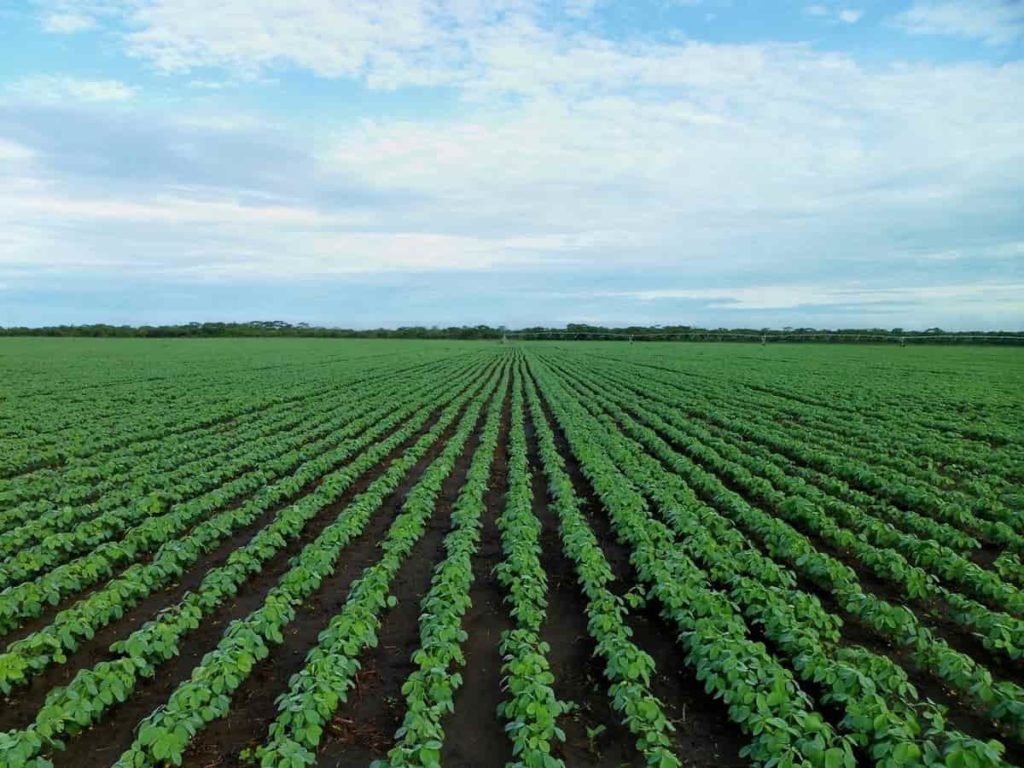
The response to direct P fertilization is usually very low in soil testing or low in soil test P. The use of starter P fertilizer in Soybeans may be a reaction, but it depends on many factors. The most important factor is the level of a soil test. In general, warmer soils at the time of sowing Soybeans than on maize may also contribute to a generally lower response to early fertilizers in Soybeans.
However, starter fertilizer in Soybeans can be a good way to supplement the nutrients that have been removed from high-yielding crops, such as corn. Fertilizer application is an effective method when planting. Soybean seeds are easily injured by fertilizer, so direct seed contact with P fertilizer is not recommended.
Potassium
Potassium is the last of the micronutrients, but certainly not the least. Potassium is also an essential component of the fertilizer mix. This element promotes fruit in the plant and also helps maintain good resistance against disease and infection. Use a high potassium fertilizer for Soybeans, with a maximum of 20 parts potassium in its mixture. Soybean seeds are relatively high in K and the removal of K by Soybeans is higher on a per bushel basis than other crops when only grains are extracted.
Like P, a soil test is the best indicator of K requirements. Fertilize low-test soils with K, either as a banded starter when planting or as a broadcast. Potassium should not be kept in contact with seeds due to possible salt injury. The increase in yield from K can be compared to that of those with very low and low soil test levels. Soybeans require more potassium (K) than other commonly grown crops.
Magnesium, Sulfur, and Iron
These are used to increase photosynthetic activity and maintain good growth. Calcium ensures good strengthening of cell walls, protection of roots, sheets, and stems. Boron is required for pollen tube growth and ensures a good fruit set. Zinc is important for photosynthetic activity.
Micronutrients
Along with macronutrients, Soybeans also need trace elements from many other elements called micronutrients. They are not required in large quantities but are essential for the plant’s energy production as well as its disease resistance. The micronutrients in Soybean fertilizer should include sulfur, iron, calcium, zinc, chlorine, molybdenum, manganese, boron, and even chlorine. Organic farming systems will be increasingly encouraged, as well as community awareness to produce quality food products that are healthy and environmentally safe.
In case you miss this: District Wise Crop Production in Maharashtra
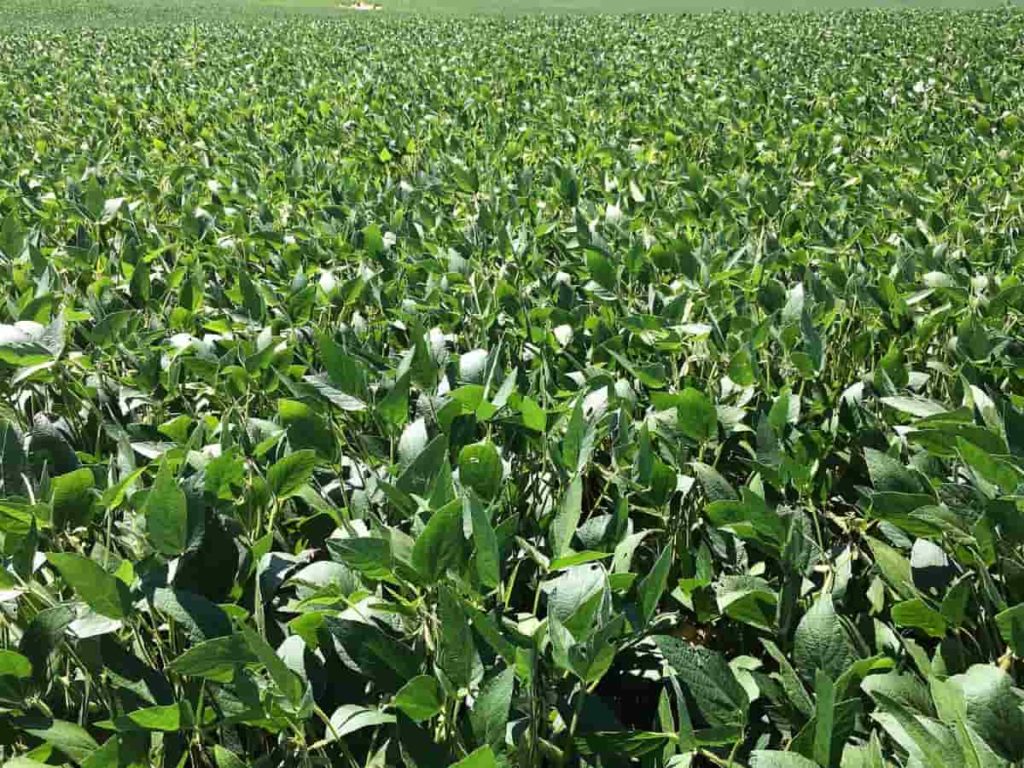
Frequently asked questions about Soybean fertilizers (FAQ)
Do Soybeans need potash?
So yes, Soybeans need corn as well as potash. Depending on the type of soil and the level of soil testing, some farmers choose to apply potash once for both crops. In this example of production, you would only need to apply 242 pounds of potash on Soybeans and corn to remove the crop.
Do Soybeans need lime?
The best Soybean yield cannot be achieved without proper lime. Soybeans are more sensitive to high levels of soil acidity than other field crops. The best pH for Soybeans on sandy and loamy soils is 5.8 to 6.2.
How many NPK does Soybean need?
The critical level of Soybean for phosphorus is 20 parts per million (ppm) and the maintenance limit is 40 ppm.
Do Soybeans need nitrogen fertilizer?
Soybeans are high in nitrogen (N). Soybeans need about four times as much N as corn.
- Economical Aquaculture: A Guide to Low-Budget Fish Farming
- 15 Common Planting Errors That Can Doom Your Fruit Trees
- How to Make Houseplants Bushy: Effective Tips and Ideas
- Innovative Strategies for Boosting Coconut Pollination and Yield
- Pollination Strategies for Maximum Pumpkin Yield
- The Complete Guide to Chicken Fattening: Strategies for Maximum Growth
- Natural Solutions for Tulip Problems: 100% Effective Remedies for Leaf and Bulb-Related Issues
- Revolutionizing Citrus Preservation: Towards a Healthier, Greener Future
- Natural Solutions for Peony Leaf and Flower Problems: 100% Effective Remedies
- Maximizing Profits with Avocado Contract Farming in India: A Comprehensive Guide
- Natural Solutions for Hydrangea Problems: 100% Effective Remedies for Leaf and Flowers
- The Ultimate Guide to Choosing the Perfect Foliage Friend: Bringing Life Indoors
- From Sunlight to Sustainability: 15 Ways to Use Solar Technology in Agriculture
- The Ultimate Guide to Dong Tao Chicken: Exploring from History to Raising
- The Eco-Friendly Makeover: How to Convert Your Unused Swimming Pool into a Fish Pond
- Mastering the Art of Delaware Chicken Farming: Essentials for Healthy Backyard Flocks
- 20 Best Homemade Fertilizers for Money Plant: DIY Recipes and Application Methods
- How to Craft a Comprehensive Free-Range Chicken Farming Business Plan
- Brighten Your Flock: Raising Easter Egger Chickens for Beauty and Bounty
- How to Optimize Your Poultry Egg Farm Business Plan with These Strategies
- Subsidy for Spirulina Cultivation: How Indian Government Schemes Encouraging Spirulina Farmers
- Ultimate Guide to Raising Dominique Chickens: Breeding, Feeding, Egg-Production, and Care
- Mastering the Art of Raising Jersey Giant Chickens: Care, Feeding, and More
- Ultimate Guide to Raising Legbar Chickens: Breeding, Farming Practices, Diet, Egg-Production
- How to Raise Welsummer Chickens: A Comprehensive Guide for Beginners
- How to Protect Indoor Plants in Winter: A Comprehensive Guide
- Ultimate Guide to Grow Bag Gardening: Tips, Tricks, and Planting Ideas for Urban Gardeners
- Guide to Lotus Cultivation: How to Propagate, Plant, Grow, Care, Cost, and Profit
- Agriculture Drone Subsidy Scheme: Government Kisan Subsidy, License, and How to Apply Online
- Ultimate Guide to Raising Araucana Chickens: Breed Profile, Farming Economics, Diet, and Care
- Bringing Hydroponics to Classroom: Importance, Benefits of Learning for School Students
- Ultimate Guide to Raising Polish Chickens: Breed Profile, Farming Economics, Diet, and Care
- Ultimate Guide to Raising Australorp Chickens: Profile, Farming Economics, Egg Production, Diet, and Care
- Silkie Chicken Farming: Raising Practices, Varieties, Egg Production, Diet, and Care
- Sussex Chicken Farming: Raising Practices, Varieties, Egg Production, Diet and Care
- Homemade Feed Formulations for Livestock: Discover Cost-effective Starter to Finisher Feed Recipes
Ah thanks for showing me this link. I started growing bea, soya and Irish potato last year. So i will need more advice on these crops. Thanks in advance.